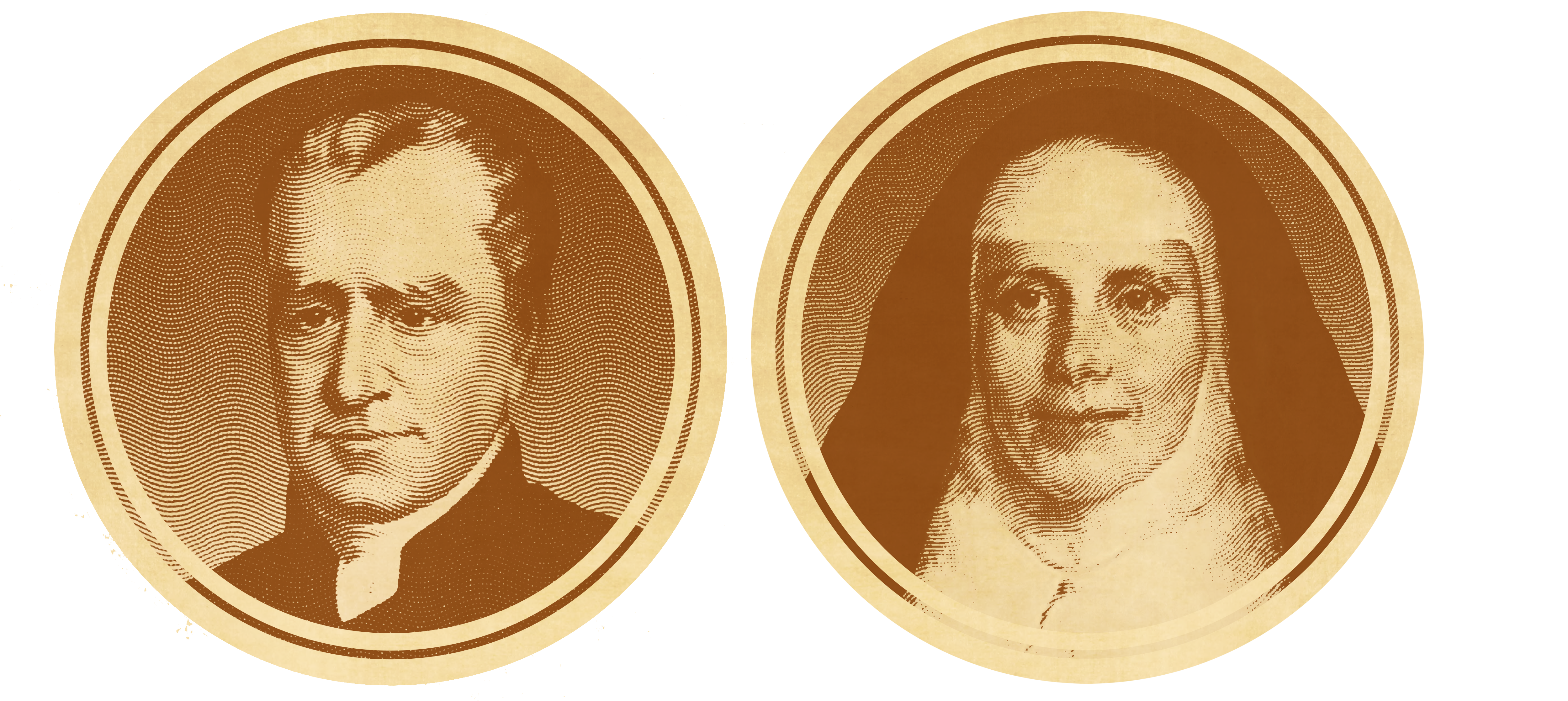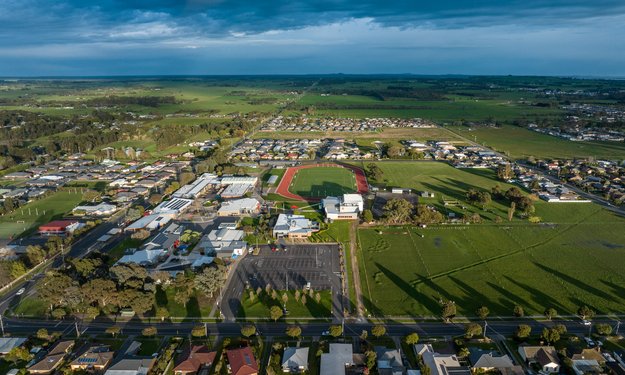The Story of our Founders
Towards the end of the 18th century, Catherine McAuley and Edmund Rice were Irish compatriots who experienced and witnessed Catholic religious oppression under British Penal Law. Inspired by the life and sacrifice of Christ, they both devoted themselves to serve people in need and went on to become legendary social reformers who helped shape the destiny of Catholic education.
The face of Mercy
In Dublin, when the threat of a one-way ticket to Botany Bay was very real for the destitute, Catherine McAuley was appalled at the way abused women and girls were suffering and was determined to do whatever she could to provide help and comfort to those who were desperately struggling. God answered her call, and in 1822 at the age of 44, Catherine received an inheritance that opened the way to the establishment of the first House of Mercy for women and girls.
It was a difficult and complex path she trod and there were many challenges for a person of her age and gender, but her courage, faith and deep belief that she was doing the right thing kept the light burning in her heart. Guided by her boundless love for God and fuelled by her deep belief that empowering women would contribute to a more just and equitable society, in 1831 Catherine McAuley founded the order of the Sisters of Mercy whose mission to transform the lives of girls through education has continued long after her death. Her compassion, determination, courage and devotion to women’s rights has left a legacy that, along with the charism of Edmund Rice, is at the core of a Trinity education.

Liberating Through Education
While Catherine McAuley was beginning her mission in Dublin, in the southern Ireland port city of Waterford, Edmund Rice was similarly affected by the poverty and hopelessness of the youth that roamed his neighbourhood. A self-made successful businessman, Edmund had a happy childhood in a comfortable and deeply spiritual family home, but his wealth and comparative privilege was in stark contrast to the hardship he witnessed around him. Inspired by the deeds of Nano Nagle and her Presentation Sisters in Cork, Edmund Rice chose to devote his life and money to the education of children in need and help break the cycle of poverty and oppression. In 1802, Edmund opened his first school, which was soon followed by another. With the Pope’s blessing, Edmund Rice initiated the order of the Presentation Brothers, which was later split into two congregations that included the Christian Brothers. To this day, the two orders continue to provide liberating education, bringing the story of Christ into the classroom, and making compassion, justice and peace a living reality within our communities.
Arrival in Colac
The history of Trinity College is uniquely entwined with the development of the town of Colac and is a story of community and faith. In 1880 the Sisters of Mercy followed the vision of their founder, Catherine McAuley, along the new train line to Colac station, arriving in a town of less than 900 souls with a hearty population of children requiring Catholic education. The Sisters commenced their mission in a weatherboard school on the corner of Culvert and Gellibrand Streets that eventually became St Mary’s convent. The little school thrived along with the industrious town around them and in 1888 the Sisters were in a position to open a high school for older children at St Joseph’s College. For more than a century, the Sisters provided disciplined and loving education to the local children, including at Sacred Heart Primary School that was opened in 1962 to cater for the spreading town.
In 1967, a new era of Catholic education in Colac was about to commence, with the call for a secondary school for boys to be established in Colac. After planning for a decade, the Catholic parish priest at the time, Monsignor J H Gleeson, invited the Christian Brothers to take up administration of the new Trinity College Colac on Pound Road, and the school welcomed 91 boys from Years 7 to 10 to be inspired by the charism of their founder, Edmund Rice.
The school steadily grew but student numbers limited subject choices and there was a trickle of older boys leaving the area for boarding schools or taking up technical studies. Combined with an increasing urgency to upgrade the ageing facilities at St Joseph’s, it was proposed that a new campus for girls would be built on the site next to Trinity College with a tentative view to form an integrated school for students up to Year 12. The plan was initially opposed by the Christian Brothers, whose very constitution limited their schools to the education of boys, but the support for the Sisters of Mercy was strong and in 1976 St Joseph’s students sat down at desks in their own school building just next door to Trinity College. Although the two schools continued to have their own administration, under the watchful eyes of Sister Philomena and Brother Fogarty, the students shared some facilities and ceremonies. In 1978, with Rome approving the Brothers’ participation in co-education, and St Joseph’s struggling through a period of leadership uncertainty, history was made when the schools were officially amalgamated as St Joseph’s-Trinity College. The community became united and in 1983 St Joseph’s-Trinity College became Trinity College Colac.


